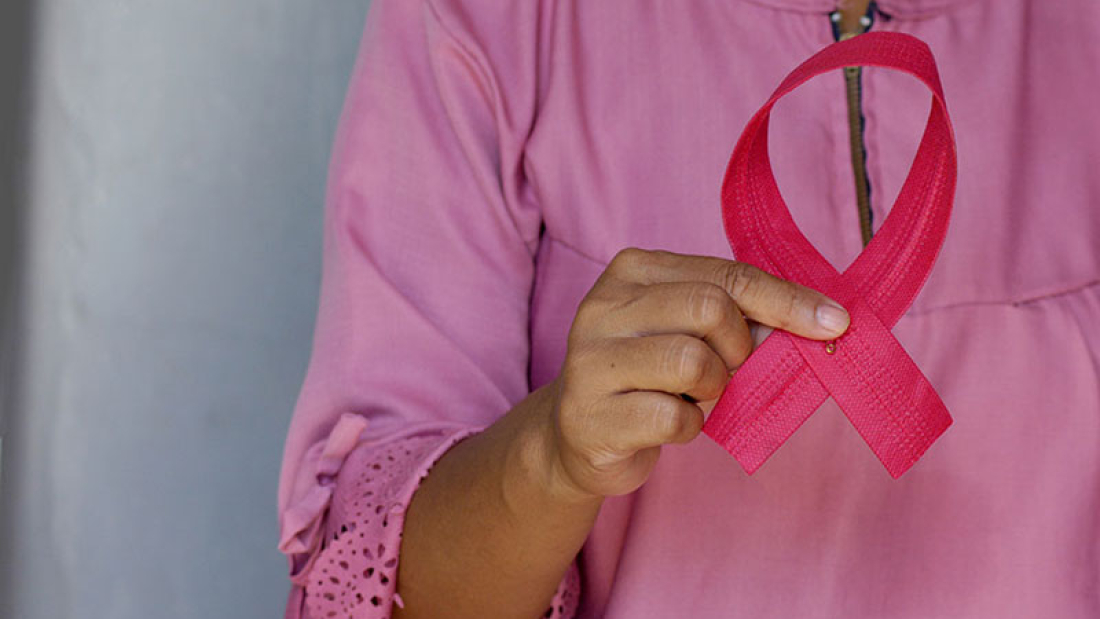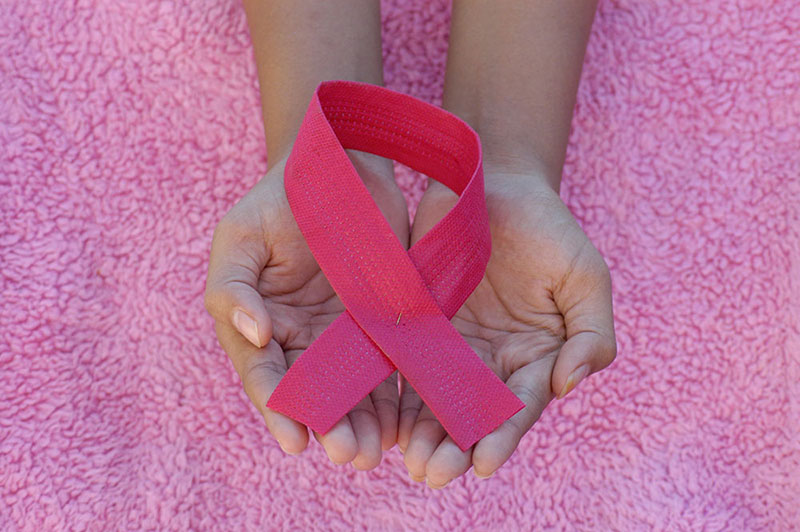Breast cancer, a complex and multifaceted disease, affects millions of individuals worldwide, making it one of the most prevalent forms of cancer. While the causes of breast cancer are diverse and often interconnected, understanding them is vital for prevention, early detection, and informed decision-making. In this exploration of the causes of breast cancer, we delve specifically into the context of Stage 1 breast cancer and the concerns it raises.
Stage 1 breast cancer represents an early and potentially treatable phase of the disease, but its occurrence prompts numerous questions and anxieties. What factors contribute to the development of breast cancer in its earliest stage? Are there identifiable risk factors that increase one’s susceptibility? How can individuals empower themselves to minimize these risks and detect Stage 1 breast cancer at its inception? These are the critical questions we aim to address in this comprehensive examination.
By shedding light on the multifaceted causes of breast cancer, particularly in its incipient Stage 1, we hope to provide a nuanced understanding of the risk factors, genetic predispositions, lifestyle choices, and environmental influences that may play a role. In doing so, we seek to empower individuals with knowledge that can aid in the prevention and early intervention of this prevalent and potentially life-altering condition. Join us as we explore the intricacies of Stage 1 breast cancer and the concerns that surround it, with the ultimate goal of fostering informed decisions and promoting breast health awareness.
What Is the Greatest Cause of Breast Cancer?
Breast cancer is a complex disease with multiple risk factors, and there isn’t a single “greatest” cause. However, some of the most significant risk factors associated with an increased likelihood of developing breast cancer include:
Gender: Being female is the most significant risk factor. Breast cancer is much more common in women than in men.
Age: The risk of breast cancer increases with age, with the majority of cases occurring in women over the age of 50.
Family History and Genetics: Having a close relative (such as a mother, sister, or daughter) who has had breast cancer, especially at a young age, can increase your risk. Inherited gene mutations like BRCA1 and BRCA2 also play a role.
Personal History: If you’ve had breast cancer in one breast, you have an increased risk of developing it in the other breast or having a recurrence.
Hormone Replacement Therapy (HRT): Long-term use of combined hormone replacement therapy, which includes both estrogen and progesterone, can increase the risk, especially in postmenopausal women.
Certain Breast Changes: Conditions like atypical hyperplasia or lobular carcinoma in situ (LCIS) can increase the risk.
Reproductive Factors: Having your first child at an older age, never having children, or never breastfeeding can slightly increase the risk.
Exposure to Estrogen: Prolonged exposure to estrogen, whether through early menstruation, late menopause, or certain medications, can increase the risk.
Lifestyle Factors: Obesity, a sedentary lifestyle, excessive alcohol consumption, and a diet high in saturated fats have been associated with an increased risk.
It’s important to note that most breast cancers occur in individuals with no family history of the disease, and many people with risk factors never develop breast cancer. Regular screening, early detection, and lifestyle modifications can help reduce the risk and improve outcomes. Women should discuss their individual risk factors and screening recommendations with a healthcare professional.
Does Stress Cause Breast Malignancies?
The relationship between stress and breast cancer is complex and not fully understood. While stress itself is unlikely to directly cause breast cancer, there is some evidence to suggest that chronic stress may contribute to an increased risk of developing cancer indirectly through its impact on behaviors and the body’s physiological responses. Here are some ways in which stress may be linked to breast cancer:
Behavioral Factors: People under chronic stress may be more likely to engage in unhealthy behaviors, such as smoking, excessive alcohol consumption, poor diet, and lack of exercise, which are known risk factors for various types of cancer, including breast cancer.
Immune System Suppression: Chronic stress can weaken the immune system, making it less effective at detecting and controlling cancer cells. A weakened immune system may allow cancer cells to proliferate more easily.
Hormone Regulation: Stress can influence the body’s hormonal balance. High levels of stress may lead to increased production of stress hormones like cortisol, which, in turn, can affect the levels of sex hormones such as estrogen. Elevated estrogen levels have been associated with an increased risk of breast cancer in some studies.
Inflammation: Chronic stress can trigger chronic inflammation in the body, and chronic inflammation has been linked to cancer development and progression.
While there is some evidence to suggest a potential link between stress and breast cancer, it’s important to note that this association is not well-established, and research on this topic is ongoing. Many factors contribute to the development of breast cancer, and stress is just one of several potential risk factors.
It’s essential to manage stress for overall health and well-being, regardless of its potential connection to cancer. Stress reduction strategies, such as mindfulness, meditation, exercise, and seeking emotional support, can be beneficial. If you have concerns about your risk of breast cancer or managing stress, it’s advisable to discuss them with a healthcare professional who can provide guidance and support tailored to your individual circumstances.
What Emotions Can Cause Cancer?
Emotions themselves do not directly cause breast cancer. Breast cancer is a complex disease influenced by a combination of genetic, environmental, and lifestyle factors. While emotional and psychological factors can affect overall health and well-being, there is no conclusive scientific evidence to suggest that specific emotions, such as stress, sadness, or anger, directly cause breast cancer.
However, chronic and severe emotional stress can potentially affect health in various ways, including weakening the immune system, promoting unhealthy behaviors (such as smoking or overeating), and disrupting hormonal balance. These indirect effects could theoretically contribute to an increased risk of cancer over time.
It’s important to note that many individuals experience stress, sadness, anger, or other emotions at various points in their lives, and the vast majority of them do not develop breast cancer or any other type of cancer as a direct result of these emotions.
Breast cancer is primarily influenced by factors such as genetics, hormonal influences, lifestyle choices (such as diet, physical activity, and alcohol consumption), and exposure to environmental risk factors. Early detection through regular screening and a healthy lifestyle can help reduce the risk of breast cancer and improve overall health. If you have concerns about your risk of breast cancer or how emotions may be affecting your health, it’s advisable to consult with a healthcare professional who can provide personalized guidance and support.
Does Lack of Sleep Cause Breast Cancer?
There is ongoing research exploring the relationship between sleep and breast cancer, but it’s important to clarify that a lack of sleep alone is not considered a direct cause of breast cancer. Breast cancer is a complex disease influenced by a combination of genetic, hormonal, lifestyle, and environmental factors.
However, insufficient sleep or chronic sleep disturbances may contribute indirectly to an increased risk of breast cancer through several mechanisms:
Disrupted Circadian Rhythms: Sleep disturbances can disrupt the body’s circadian rhythms, including the production of melatonin, a hormone that regulates sleep and wake cycles. Melatonin is thought to have antioxidant and anti-cancer properties, so disruptions in its production may theoretically affect cancer risk.
Hormonal Changes: Sleep deprivation and irregular sleep patterns can lead to hormonal imbalances, including changes in the levels of estrogen and insulin, which have been linked to breast cancer risk.
Impaired Immune Function: Chronic sleep deprivation may weaken the immune system, potentially making it less effective at detecting and controlling the growth of cancer cells.
Unhealthy Behaviors: People who consistently get insufficient sleep may be more prone to adopting unhealthy behaviors such as poor dietary choices, lack of physical activity, and increased stress, which are themselves risk factors for breast cancer.
While some studies have suggested associations between poor sleep and an increased risk of breast cancer, it’s important to emphasize that these relationships are still being researched and are not fully understood. Breast cancer is a complex disease with many contributing factors, and sleep is just one potential piece of the puzzle.
To reduce the risk of breast cancer and maintain overall health, it’s advisable to prioritize healthy sleep patterns along with other lifestyle factors like a balanced diet, regular exercise, and avoiding tobacco and excessive alcohol consumption. If you have concerns about your sleep patterns or breast cancer risk, consider discussing them with a healthcare professional who can provide personalized guidance.
How Can I Keep My Breast Healthy?
How can I keep my breast healthy?Maintaining breast health is essential for overall well-being and the early detection of any potential issues, including breast cancer. Here are some steps you can take to keep your breasts healthy:
Self-Exams: Perform regular breast self-exams to become familiar with the normal look and feel of your breasts. This can help you detect any changes, such as lumps or unusual textures, more easily. Consult with your healthcare provider to learn the proper technique for self-exams.
Regular Screening: Follow recommended breast cancer screening guidelines, which often include mammograms, clinical breast exams, and possibly breast MRI for those at higher risk. Discuss your screening schedule with your healthcare provider, taking into account your age, family history, and individual risk factors.
Healthy Lifestyle: Adopt a healthy lifestyle that includes a balanced diet rich in fruits and vegetables, regular physical activity, and limited alcohol consumption. Maintaining a healthy weight is also important, as obesity has been linked to an increased risk of breast cancer.
Breastfeeding: If you have the opportunity, consider breastfeeding your baby. Breastfeeding has been associated with a reduced risk of breast cancer.
Limit Hormone Therapy: If you are considering hormone replacement therapy (HRT) to manage menopausal symptoms, discuss the risks and benefits with your healthcare provider. Long-term use of combined HRT (estrogen and progestin) has been associated with an increased risk of breast cancer.
Avoid Tobacco: If you smoke, quit smoking. Smoking has been linked to an increased risk of various cancers, including breast cancer.
Reduce Stress: Manage stress through relaxation techniques like meditation, yoga, deep breathing, or hobbies that you enjoy. Chronic stress can affect overall health.
Limit Exposure to Environmental Toxins: While the link between environmental toxins and breast cancer is not fully understood, minimizing exposure to harmful chemicals, such as certain pesticides and plastics, is a prudent approach to maintaining overall health.
Regular Check-Ups: Schedule regular check-ups with your healthcare provider. Discuss any concerns or changes in your breast health during these appointments.
Know Your Family History: Understand your family’s medical history, especially regarding breast cancer. If you have a family history of the disease, discuss it with your healthcare provider, as it may impact your screening and prevention strategies.
Remember that maintaining breast health involves a combination of self-awareness, healthy lifestyle choices, and regular medical check-ups. If you notice any changes in your breasts or have concerns about breast health, consult with a healthcare professional for guidance and appropriate evaluation. Early detection is key to successful treatment in the event of breast cancer or other breast-related issues.
How Breast Cancer is Staged?
Breast cancer is staged to determine the extent of the disease and to guide treatment decisions. Staging is based on several factors, including the size of the tumor, whether it has spread to nearby lymph nodes, and whether it has metastasized (spread) to distant parts of the body. The most commonly used staging system for breast cancer is the TNM system, which stands for Tumor, Nodes, and Metastasis. Here’s an overview of how breast cancer is staged using the TNM system:
Tumor (T): This category describes the size and extent of the primary tumor within the breast. It is usually assigned a number from 0 to 4, with higher numbers indicating larger tumors or greater involvement of nearby tissues. Tumor size is measured in centimeters (cm).
T0: No evidence of a primary tumor in the breast.
T1: The tumor is 2 cm or smaller in its greatest dimension.
T2: The tumor is larger than 2 cm but not larger than 5 cm.
T3: The tumor is larger than 5 cm.
T4: The tumor has invaded the chest wall or the skin of the breast.
Nodes (N): This category indicates whether cancer cells have spread to nearby lymph nodes, which are small, bean-shaped structures that help filter and fight infections. Lymph node involvement is assessed based on the number and size of affected nodes.
N0: No regional lymph node involvement.
N1: Cancer has spread to 1-3 axillary (underarm) lymph nodes or to lymph nodes near the breastbone (internal mammary nodes).
N2: Cancer has spread to 4-9 axillary lymph nodes or to lymph nodes near the breastbone.
N3: Cancer has spread to 10 or more axillary lymph nodes or has metastasized to lymph nodes above the collarbone (supraclavicular nodes).
Metastasis (M): This category indicates whether the cancer has spread to distant parts of the body, such as the lungs, bones, liver, or brain.
M0: No distant metastasis; cancer has not spread to other organs.
M1: Distant metastasis is present; cancer has spread to other organs.
Once the T, N, and M categories are determined, an overall stage is assigned, ranging from 0 to IV, with 0 indicating a very early stage and IV indicating an advanced stage of breast cancer. The stage helps healthcare providers determine the appropriate treatment plan and prognosis for the patient.
Staging is a crucial part of diagnosing and managing breast cancer, and it is typically determined through a combination of physical exams, imaging studies (e.g., mammography, MRI), biopsies, and sometimes surgical procedures. It’s important to consult with a healthcare professional for a thorough evaluation and discussion of your specific breast cancer stage and treatment options.
How Many Stages Are There?
Breast cancer is typically staged using a system known as the TNM system (Tumor, Nodes, Metastasis), which provides a detailed assessment of the extent of the disease. However, when discussing breast cancer stages in a simplified manner, there are generally five main stages, often referred to as stage 0 through stage IV. These stages provide a broad classification of breast cancer based on the extent of its progression:
Stage 0: Stage 0 is also known as “carcinoma in situ.” It represents non-invasive breast cancer, where abnormal cells are confined to the milk ducts (ductal carcinoma in situ, DCIS) or lobules (lobular carcinoma in situ, LCIS) and have not invaded surrounding tissues.
Stage I: In this early stage, the cancer is small and localized to the breast. It may be further categorized as IA (tumor ≤ 2 cm) or IB (tumor 2-5 cm) based on tumor size and whether lymph nodes are involved.
Stage II: Stage II is divided into IIA and IIB. In IIA, the tumor is still relatively small but may have spread to a few nearby lymph nodes. In IIB, the tumor is larger (often > 5 cm) and may or may not involve nearby lymph nodes.
Stage III: Stage III breast cancer is considered locally advanced. It may be further divided into IIIA, IIIB, and IIIC, depending on the extent of tumor growth and lymph node involvement. Stage III cancers are larger and have typically spread to multiple lymph nodes.
Stage IV: This is metastatic breast cancer, where cancer cells have spread to distant organs or tissues, such as the lungs, bones, liver, or brain. Stage IV breast cancer is considered advanced and is not curable, but treatment can help manage the disease and its symptoms.
Each stage represents a different level of cancer progression, with higher stages indicating more extensive disease. The stage of breast cancer is crucial for determining treatment options and predicting prognosis. It’s important to note that the TNM system provides even more detailed information about the extent of the disease within each of these broad stages. A healthcare provider will use a combination of clinical, imaging, and pathological information to accurately stage breast cancer.
Our exploration of the causes of breast cancer, particularly in the context of Stage 1, has illuminated the multifaceted nature of this disease. While we recognize that breast cancer is a complex condition influenced by an interplay of genetic, environmental, and lifestyle factors, our focus on early-stage concerns has revealed crucial insights.
Understanding the risk factors associated with Stage 1 breast cancer empowers individuals to make informed choices about their health. Factors such as genetic predispositions, hormonal influences, and lifestyle choices all play pivotal roles in breast cancer development. By acknowledging these factors, we can take proactive steps to mitigate risks, whether through regular screenings, adopting healthier lifestyles, or discussing preventive measures with healthcare professionals.
Moreover, our journey through this topic underscores the importance of early detection. Regular self-exams, clinical breast exams, and mammograms are instrumental in catching breast cancer at its earliest, most treatable stage. Vigilance and self-awareness are key allies in this fight against the disease.
Breast cancer, like any formidable foe, requires a comprehensive approach. It demands not only awareness and education but also a commitment to overall well-being. By embracing a holistic approach to breast health, we can work collectively to reduce the impact of breast cancer and offer hope to those affected by it. Together, we can foster a future where breast cancer concerns are minimized, and early-stage diagnoses lead to successful outcomes.
Brought to you by Fomat Medical



